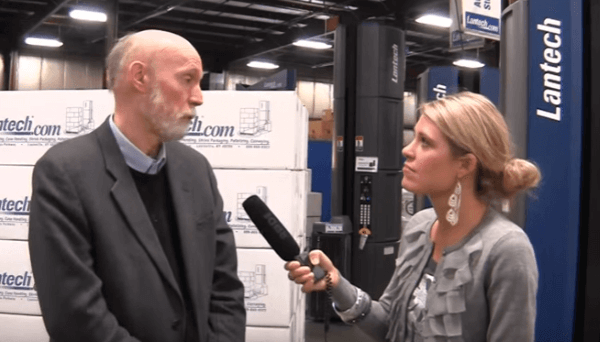We like using the PDCA Loop for things off the manufacturing floor. Whether it’s organizing an event, packing for vacation, or even personal growth, there are a lot of places the PDCA Loop works. The PDCA Loop — which stands for Plan, Do, Check, Adjust (or Act, depending on who you ask) — is a continuous cycle of improvement commonly used in manufacturing settings. In it, you make a Plan of action, Do it, Check the results, and then Adjust to achieve the optimal settings. So how can we use that to accomplish our personal and professional goals? Let’s say you want to write a self-published e-book. How can we use the PDCA Loop for something like that?
1. Plan
First, we need to state our goal. It has to be measurable and have a deadline. “Write a book” is no good, because it’s too vague. We don’t have a deadline, which means there’s nothing looming in the distance to motivate us, and we don’t know how long our book should be. “Write and publish a 100-page e-book on Amazon.com by December 1” is an easily identifiable and achievable goal. We know how big the book has to be (100 pages), we know when it has to be done (December 1), and we know what success looks like (publish it on Amazon). So now you just jump in and start writing, right? No. The other part of our Plan includes milestones, so we know we’re making progress. Otherwise, we’ll be scrambling the last week of November to get this done. Our milestones can include “complete 25 pages each month,” or “have first draft ready for editing by November 15.”
2. Do
Now you can start writing. As part of your plan, you’ll want to schedule time to write, so make sure you stick to it. You’ll want to make this a priority, so do whatever you need to in your own life to make it fit within your schedule. Whether it means getting up an hour early, staying up later, or even just adding blocks of time to your daily schedule, you need to make sure you’re allowing yourself enough time to Do the work.
3. Check
Plot out each of your milestones, and then Check whether you’re reaching them. If you want to have 25 pages completed each month, you should have 25 actual pages written by the last day of the month. If you spread it out right, that works out to one page per day, or 7 pages over a weekend, and you should have a pretty good idea of whether you’re going to meet that goal or not. The point is to not be surprised that things aren’t going well when it’s 9:00 pm on November 30, and you’ve only done 10 pages. Use your milestones to keep yourself on track.
4. Adjust
Of course, things happen, life gets in the way, and we sometimes have to scale back on our activities. That means you may need to make Adjustments during your writing. Thanks to some setbacks, you don’t get 25 pages done in the first month. In fact, you only got 10 pages written. Don’t worry, this is why we have the Adjustment phase. If you want to stick to your original goal, you may need to up your monthly page output an additional five pages per month. Or, you can start editing earlier to save time. You could also adjust your goal, push the deadline date out by a month, or reduce the length of the book to 75 pages. After you’ve made your necessary adjustments, change the plan, and start doing the work again. Then, be sure to keep checking and adjusting constantly to make sure you’re on track to meet your goal. When everything is said and done, you’ll have your new 100-page e-book up on Amazon, ready to wow your readers. And by using the PDCA Loop in your professional growth, you can continue on to new goals and new accomplishments.
Looking for other ways to improve? Check out our 10-Step Process for Damage Reduction Through More Effective Stretch Wrapping. Our process will show you:
- How to reduce your shipping damage by 50%!
- The key elements of a stretch wrapping standard!
- How to manage containment force – stretch wrapping’s most critical component!
Click here to read a related blog: Four Lessons Ernest Hemingway Teaches Us About Lean Manufacturing
This post was published on July 24, 2013 and updated on August 8, 2017.
July 24, 2013









